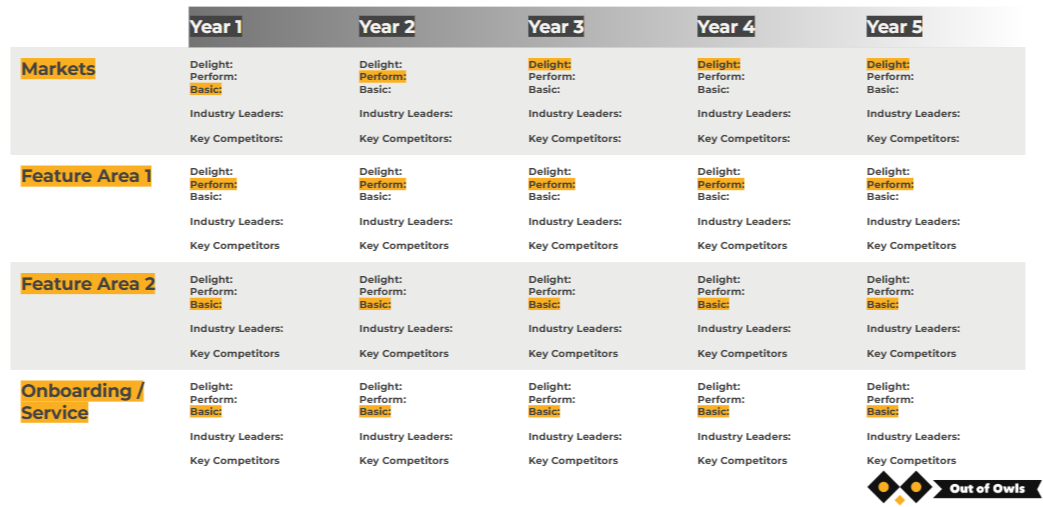Stop Debating Pet Features: A Better Way to Align Product Strategy
It’s been 10 years since I learned about the Kano model (from Jared Spool’s talk at Mind the Product). And while it’s always been something that I turned back to as an inspiration, it’s also been difficult to put into use practically… until last week, when it became the perfect way to align a product team in how they communicate their roadmap priorities.
Why I haven’t used it before:
The basic concepts of the Kano model - make sure you’ve got the basics covered, pay attention to the satisfiers across your market, don’t prioritise too many delighters (no matter how much fun they might be), and that features migrate from delighter to basic over time - are easy to grasp. They’re easy to use in terms of talking about specific features, and it’s been great for specific conversations, especially with product teams for whom the context is specific.
But I’ve never put the Kano model itself into a roadmap or strategy presentation, because it’s not specifically tied to the strategy landscape. In conversations with audiences of stakeholders and senior management, it’s too abstract - we end up going down rabbit holes based on pet ideas.
What was missing was a way to focus the room on which aspects we want to commit our resources to distinguish ourselves from the market, and where we want to ensure that we’re meeting the basics. Just as importantly, it’s often imperative to show that what’s standard today won’t be considered good enough in the future - that we need to commit to spending time and energy in specific areas just to meet the minimum requirements of our market.
What’s different this time:
A client came to me with a specific problem to solve: they worked with both hardware and software in a well-defined space, and they were having issues communicating their potential strategy across the organisation. I’m not sure why it clicked this time - maybe it’s because they worked with components from various suppliers? or the nature of hardware in a mature market? - but the Kano model popped up as the perfect metaphor. The only challenge was how to represent it on a page in a way that provided the needed context.
As we looked at ways of communicating the relative position of the client in the competitive market landscape, I developed this template:
For each of the key Competitive Areas - be it Markets, Feature areas, or Experience/Perception - we asked the Product team to describe the state of the market as it currently is. If it was electric vehicles, for example, one of the key Feature Areas might be Range, with 150 miles as the Basic level and 500 as the Delighter.
We then asked them to forecast how that might change over the next 5 years - it would be natural to expect that the Basic level for Range would increase, but by how much? There’s a big difference in asking a team to improve a feature by 10% vs 100%. And how quickly would they need to do it?
Finally, they were then tasked to propose where the company should be aiming its efforts in each area over time. Was Range going to be a key competitive area for them, or would they focus on market availability? How quickly their batteries could recharge? Style and luxury?
Creating a draft version of this grounds discussions with partner teams across, gaining alignment or highlighting areas that need to be elevated to Leadership for resolution. It also grounds planning - the roadmap, financing, and prioritisation debates - making it clear what the teams need to accomplish a particular strategy, what they might de-prioritise, and the trade-offs to accomplish it.
Want to give it a try? Grab the template here:


